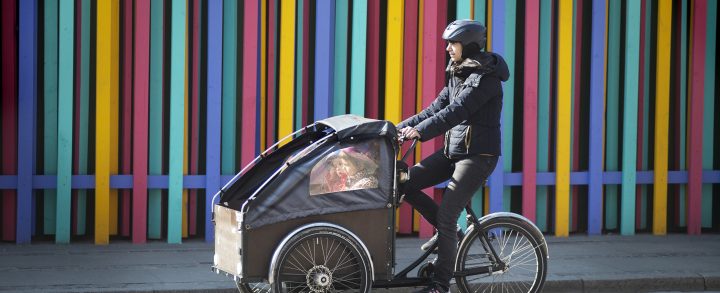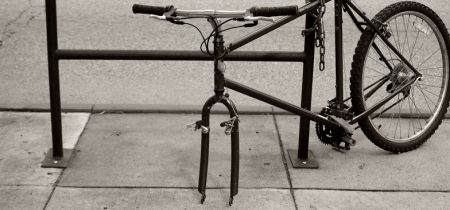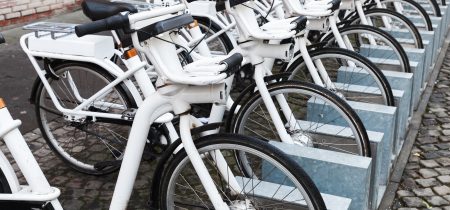The Bicycle – Bicycle Types and accessories
Almost every Dane owns a bicycle, which is a significant factor underlying Danish cycling culture. But a bike isn’t just a bike. There are many different types of bicycle and accessories tailored to the individual cyclist’s needs and wants.
By Lotte Malene Ruby, Danish Cyclists’ Federation
In Denmark we generally perceive the bicycle as a simple means of transport. In many other countries bicycles are often considered sports equipment or a toy, but we are primarily everyday cyclists in Denmark. This is reflected in our choice of bicycle.
In this article you can read about the following, among other things:
- Different bicycle types
- Safety accessories
- Accessories for shopping by bike
Almost every Dane owns a bicycle, around nine people out of ten. Around 4,000 – 5,000 bicycles are sold annually, most of which are relatively cheap bikes suitable for daily commuting over shorter distances. However, in recent years many new types of bicycle have come on the market and are gaining ground. According to the association of Danish bicycle dealers one out of ten bicycles sold today is an E-bike. If Denmark continues to follow the current trend in the Netherlands, the market share of E-bikes will increase significantly in coming years.
Bicycle Types
The most frequently encountered type of bicycle in Denmark is a classical city bike, but today there are also many other bicycle types on the road:
- Cargo bikes of various kinds, which are especially suitable for families with small children and tradesmen
- E-bikes, which can increase the cycling range of commuters and persons with reduced mobility.
- Folding bikes, which make it easier to combine cycling with trains and busses.
- Run bikes, which have become many children’s first bicycle within the past 15 years.
- Mountain bikes and racing bikes which reflect a general increase in the interest in competitive and recreational cycling.
- Speed pedelecs – the new kid in town, although it’s debatable whether this is an E-bike at all or rather a kind of moped since it’s approved to go 45 km an hour.
Safety accessories
Traffic safety is crucial for all road users and especially for vulnerable road users such as cyclists. This is one of the reasons why we have a so-called bicycle equipment directive in Denmark which establishes the rules for bicycle equipment. All bicycles that are used on the roads must comply with the rules, and are subject to a police fine if they do not.
Here are some of the main points:
- A bicycle must have two independent braking systems for the front and back wheel respectively.
- The bicycle must be equipped with reflectors in front, back and on the wheels.
- The bicycle must be equipped with authorized bike lights when cycling between sunset and sunrise
The bicycle directive sets forth rules on a number of other matters as well, including the bicycle’s size and weight, and also includes detailed rules for the transport of goods and passengers.
Although there is a broad consensus on most of the articles, the bicycle directive is often the center of debate, primarily because the types and uses of bicycles are constantly changing. One of the points debated, for example, is how many children may be transported on a bicycle.
The debate arose when several daycare centers began transporting children in cargo bikes, which created a desire to use new bike types with room for more children, and the need to take a new look at the rules. As a result of the discussions the rules were subsequently modified.
If we wish to promote a strong cycling culture, it is crucial to ensure that the rules for the bicycle’s equipment and use are up-to-date and open to on-going discussion.
Bicycle Accessories
You don’t necessarily need a lot of fancy accessories to be a cyclist – Danish cycling culture is a case in point. Most everyday cyclists, for example, have neither special cycling outfits nor cycling shoes, but simply wear their ordinary clothes in accordance with the weather.
The use of bike helmets, however, has risen sharply, from 6% in 2004 to 28% in 2015, according to the Danish Road Safety Council. Children in particular are willing to use a helmet; approximately three out of four children between the ages of 10 and 12 use a helmet. This is partially due to safety campaigns such as the Danish Road Safety Council’s campaign, as well as to a marked increase in variety when it comes to the choice of helmet. Helmets are not mandatory in Denmark, neither for children nor adults, but the issue is an on-going issue for discussion.
Apart from the helmet, the most important accessory for most everyday cyclists is bike-friendly raingear. Needless to say there are also countless other cycling accessories, such as clothing, shoes and gloves, which can make life easier or enhance the joy of cycling for the individual cyclist depending on his or her needs and wants.
Bike bags and trailers for shopping
When it comes to shopping, the average Danish everyday cyclist is poorly equipped compared to the Dutch, for example, who have taken to the bike bag or pannier to a far greater degree. It is surprising that in a country where so much shopping is done by bike so little attention is paid to the transport of goods.
Although panniers have become a more frequent sight in recent years, the bike basket is the dominant form of goods transport on women’s bikes whereas the majority of men make do with a luggage rack.
There can be no doubt that panniers provide a far better distribution of weight and are much safer when it comes to goods transport, with a trailer for major shopping if you’re not the lucky owner of a cargo bike. If you do a lot of everyday biking and often do your shopping on the way, it’s definitely worth considering a pannier.
A bike trailer for shopping is a good idea if you want to do your big shopping without a car and aren’t interested in a cargo bike. There are different types, and a good trailer is not cheap, but if the alternative is a car, then the investment will quickly pay for itself.
Generally speaking cyclists are a major customer segment in urban areas, as this study of 7 Danish cities shows.





